Inching through a field surrounded by palm trees and broad plantain leaves. I feel sweat trickle down my face from underneath my helmet. After a brief rainstorm, the sun is now blazing, and our drenched uniforms are steaming, making for an uncomfortable stickiness. The year is 1967, and I’m in the Vietnam jungle, a war journalist attached to a US Army platoon.
We’ve just been ambushed by Viet Cong guerrillas, and a few of our men are down. A soldier radios for a rescue helicopter. With the wounded on stretchers, they move slowly with weapons ready.
I diligently capture every moment with my Nikon D700 digital camera — which isn’t supposed to exist in this era. And I’m wearing a Republic of China (ROC) army uniform, with a sewn-on name tag that’s clearly not mine: Tzeng Wen-jie (曾文杰).
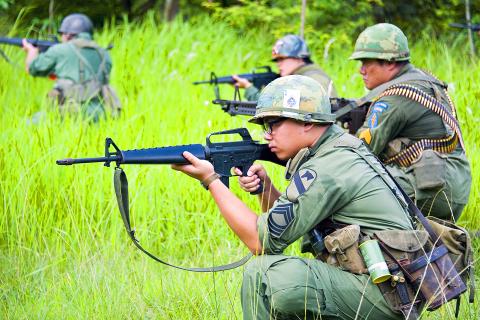
Photo: Han Cheung, Taipei Times
THE ROAD SOUTH
“You’re a time traveler,” Tzeng says, referring to my camera after he lent me his uniform when we arrived at the military history park at Nanhua Reservoir (南化水庫) in the extreme east of Tainan.
We’re at a reenactment photo and video shoot organized by Taiwan Reenactment Group (TRG). The other photographers and I are the only historical anomalies. The platoon is dressed in full US army garb. Some have a pack of Marlboro reds attached to their customized helmets (Tzeng has “Born to Kill” written on his), grenade and smoke bomb belts and Vietnam War-era appropriate weapons.
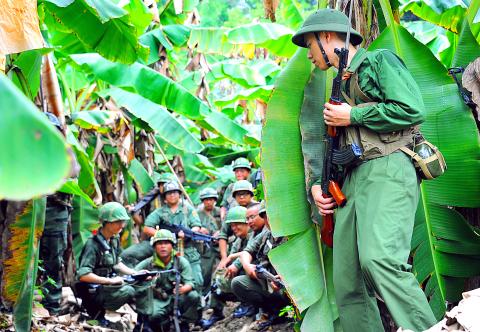
Photo: Han Cheung, Taipei Times
I first learned about this reenactment group through Deryk Walker, whom I met in full military uniform at a US prisoner of war memorial last month. Intrigued, I headed to Tainan last Saturday for a two-day Vietnam War reenactment.
I meet Steven Wang (王志文) at Sanjia (山佳) train station around 8:20am. He’s an elementary school teacher with a strong interest in local history and geography. Wang, whose interest in reenactment grew out of making military models, briefly describes the group.
It appears that TRG is pretty welcoming. Despite being sticklers to historic details, they don’t exclude people who may not have authentic uniforms or are missing some equipment. They also don’t talk politics and don’t attend political events. That way, people of different beliefs and ideologies can still have fun — which is the main goal of the group.
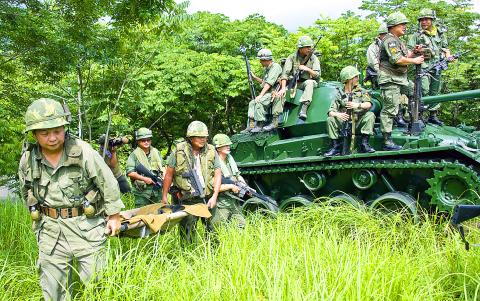
Photo: Han Cheung, Taipei Times
We arrive at Joseph Chen’s (陳益源) house, where heaps of equipment bags are piled outside his door. One of the event’s organizers, Chen also started out building models. He has a full-scale homemade cannon in his garage made from pipes and boards.
It appears that most people join because they were either model enthusiasts or military equipment collectors. It’s better than just keeping the stuff in a room at home, they say.
Near Taichung I switch to Tzeng’s car. He is already in a green uniform and black army boots. He also has on a wide-brimmed hat and a string necktie.
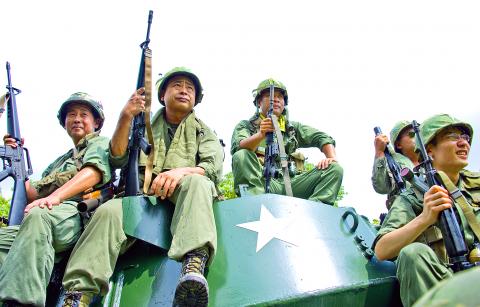
Photo: Han Cheung, Taipei Times
Turns out that, like me, he’s also a University of Missouri graduate. He’s been collecting military equipment for 30 years, but only found this group a year ago.
A few hours later, we arrive at our rendezvous point, Yujing District (玉井區), a rural area in eastern Tainan that calls itself the homeland of mangos. Fruit vendors are everywhere downtown, and mango ice shops abound. The elementary school gate is covered in anthropomorphic mango drawings, and in the middle of a roundabout is a metal sculpture topped with … yes, a red-and-orange mango. On its base are four characters in gold that read “I love mango” (我愛芒果).
Tzeng stops at a 7-Eleven and asks if I could grab some coffee and beer.
“Yes,” I reply in Chinese.
“No, we say ‘Roger that,’” he says. “We have to start getting into the proper mindset.”
“Roger that,” I say.
THE BATTLE BEGINS
There are 12 vehicles in total — one is painted like a US Army vehicle. My amazement grows as I notice a few 50s and 60s-style US military jeeps. Members range from 15 to 67 years old and come from all over the country — all brought together by the power of Facebook.
We’re at Nanhua Reservoir Military History Park (南化水庫軍史公園) where various US military vehicles used in Taiwan are on display. There are 15 US soldiers and one Viet Cong played by You Chih-jie (游智傑), who is also the group’s iPhone cameraman. He says he usually has more comrades, but none showed up today. The crew proceeds up the hill where there’s a M24 tank sitting at the end of a grassy field.
The soldiers decide to do a group photo shoot first. They clamber up the tank. Facing an angle where the Chinese Nationalist Party emblem can’t be seen, one soldier slaps a US Army star magnet onto the side of the tank. In Tseng’s backpack is a full-scale model radio, made by Chen with wooden boards, soda bottle caps and other scrap material. An MP3 player in the backpack broadcasts Vietnam War radio chatter. Chen — who appears to be the director — and other photographers snap away.
After several poses, everyone (including me) joins the photo, making for a strange scene: three people smiling next to each other wearing ROC, Viet Cong and US army uniforms.
Next, they film the helicopter rescue scene. Tzeng barks in US military lingo into his radio as the troops advance slowly then make a dash for the invisible aircraft.
The group takes a brief rest at the parking lot. Tzeng cranks up the radio — now blaring the 1966 hit Wild Thing by The Troggs.
Chen asks a photographer’s wife and daughter if they want to be Viet Cong guerillas. He gives them each a conical hat, a black robe, a rifle and “Ho Chi Minh sandals” made of recycled tires. They seem amused and pose for photos to the tune of I Fought the Law by the Bobby Fuller Four.
Next is a scene of the jeeps climbing a hill, and after that three more sites: a C119 Flying Boxcar aircraft, an LVT amphibious landing craft and an F-5E Tiger warplane. I join in the action, pretending to be talking into a receiver while fiddling with radio knobs.
There’s a sense of camaraderie, and everyone seems to be happy to be there. One guy wants to do a riverbank scene, but people say they’re too tired. Some head off, while others stay in the parking lot, taking photos with different equipment and laughing.
We then head to our barracks, a resort called Guidan Hot Spring Holiday Park (龜丹休閒體驗農園). The group drinks beer, soaks in the springs and talk about history, the military and how much they appreciate this group while giving advice to younger members, late into the night. I meet yet another alumni — an art teacher who attended Pratt Institute in Brooklyn.
AMBUSHED
We wake up to heavy rain the next day. Walker is the director today — Chen says whoever has an idea can lead. There’s supposed to be more combat action today, but the soldiers are waiting out the rain in a sheltered area. Shaking All Over by The Guess Who is the jam now, and some members have all their equipment neatly arranged on the floor. One person lies next to the pile, while another takes a bird’s-eye photo that makes the subject look like a miniature plastic model figurine.
Walker teaches me how to properly handle an M16. He then shows me how to salute, and explains that the lower ranking soldier never puts his hand down until the higher ranking one does — which he says is often incorrectly portrayed in movies.
Later, some ladies working at the hotel come by and ask to take pictures with us. Apparently we’re celebrities now.
The rain stops, and Walker wants to do an ambush scene. He has the men slowly advance on a muddy rural road. “Slower, look right, look left,” he yells.
The lone Viet Cong is hidden behind a haystack. He fires as the men approach (sound only) and a few men fall to the ground. Medics immediately get to work.
Another ambush later, Cody Chang (張義芳) wants the crew to lie prone on a haystack in a row and fire at the enemy. Walker says that haystacks won’t shield enemy fire, but goes with the idea anyway. Chang is very animated, shouting, running, falling and shooting. The day wraps up with scenes over a bridge — where the group jokingly salutes or greets every car that passes by — and under giant leaves in a plantain field.
After a final soak in the springs, five of us — now in civilian clothes — head to the fruit market in Yujing to sample some mango ice. It comes in a large bowl with shaved ice, syrup and condensed milk topped with large chunks of sweet mango, slices of pickled green mango and a scoop of mango ice cream. No wonder it costs NT$100.
Tzeng drops me off at Hsinchu, where I take the train back to Taipei. I must admit that I thought the story would be stranger than this, but the truth is they are simply a bunch of regular dudes who share the same interest. And, I did have fun.
For more information, visit Taiwan Reenactment Group’s Facebook page at www.facebook.com/TWREACT
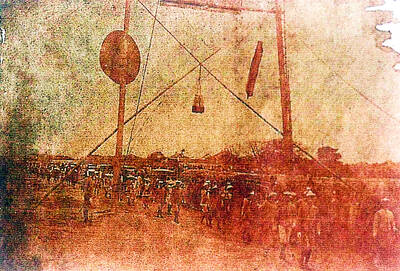
June 23 to June 29 After capturing the walled city of Hsinchu on June 22, 1895, the Japanese hoped to quickly push south and seize control of Taiwan’s entire west coast — but their advance was stalled for more than a month. Not only did local Hakka fighters continue to cause them headaches, resistance forces even attempted to retake the city three times. “We had planned to occupy Anping (Tainan) and Takao (Kaohsiung) as soon as possible, but ever since we took Hsinchu, nearby bandits proclaiming to be ‘righteous people’ (義民) have been destroying train tracks and electrical cables, and gathering in villages
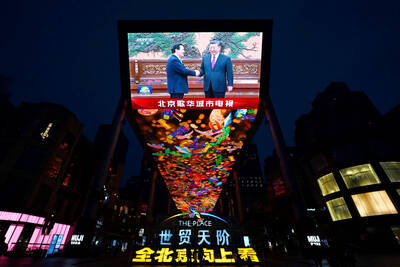
Dr. Y. Tony Yang, Associate Dean of Health Policy and Population Science at George Washington University, argued last week in a piece for the Taipei Times about former president Ma Ying-jeou (馬英九) leading a student delegation to the People’s Republic of China (PRC) that, “The real question is not whether Ma’s visit helps or hurts Taiwan — it is why Taiwan lacks a sophisticated, multi-track approach to one of the most complex geopolitical relationships in the world” (“Ma’s Visit, DPP’s Blind Spot,” June 18, page 8). Yang contends that the Democratic Progressive Party (DPP) has a blind spot: “By treating any
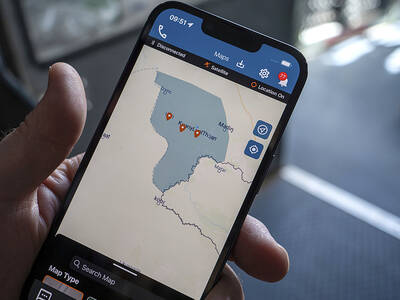
Swooping low over the banks of a Nile River tributary, an aid flight run by retired American military officers released a stream of food-stuffed sacks over a town emptied by fighting in South Sudan, a country wracked by conflict. Last week’s air drop was the latest in a controversial development — private contracting firms led by former US intelligence officers and military veterans delivering aid to some of the world’s deadliest conflict zones, in operations organized with governments that are combatants in the conflicts. The moves are roiling the global aid community, which warns of a more militarized, politicized and profit-seeking trend
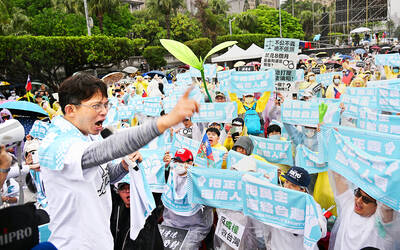
This year will go down in the history books. Taiwan faces enormous turmoil and uncertainty in the coming months. Which political parties are in a good position to handle big changes? All of the main parties are beset with challenges. Taking stock, this column examined the Taiwan People’s Party (TPP) (“Huang Kuo-chang’s choking the life out of the TPP,” May 28, page 12), the Democratic Progressive Party (DPP) (“Challenges amid choppy waters for the DPP,” June 14, page 12) and the Chinese Nationalist Party (KMT) (“KMT struggles to seize opportunities as ‘interesting times’ loom,” June 20, page 11). Times like these can